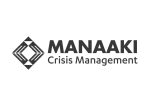Good data = Good decisions
It's a simple equation. Good data provides the information you need to make sound evidence-based decisions.
Evidence-based decisions
Evidence-based decision making (EBDM) is about making the best decisions possible using the evidence available. It avoids decision making that is based on intuition or instinct and instead relies on data and facts. If you want to make decisions that result in the best possible outcomes, then data is your friend.

Getting the data
For the big decisions, such as purchasing a house or evaluating organisational health and safety risks, gut-feeling doesn’t quite cut it. Without the right data, sooner or later you’re likely to make a decision you may later regret. But getting your hands on the right data, and interpreting it correctly, is generally easier said than done. That’s where Secintel comes in.

Why infometrics?
Infometrics: the science of modelling, reasoning, and drawing inferences under conditions of noisy and limited information.
Meet the standard...
Organisations are adequately protected from security threats when they deploy appropriate security controls. These are the outcomes of security risk management processes that accord with international standards, such as ISO 31000 (2018) Risk Management, HB 167 Security Risk Management, and ASIS International’s Enterprise Security Risk Management (ESRM) Guideline.
Acquire the evidence...
Infometrics allows for the systematic analysis of large datasets to identify patterns and trends, enhancing the ability to predict and mitigate potential threats. By quantifying information, infometrics enables more objective and data-driven decisions and reduces reliance on subjective judgment. This provides pragmatic views of your local security environment.
The Secintel difference...
Open source and internal datasets curated, collated and visualised via Secintel's geomapping interface.
Get the picture:
Harnessing powerful mapping and visualisation tools, the Secintel platform presents information drawn from diverse open source data in an easy-to-use interactive format.
Now you can compare incidence of certain crimes, for example, over specific periods and neighbourhoods. Or, using security incident data from your premises, you can identify heat-mapped high-severity hotspots.

See the trends:
Secintel’s historical data and powerful analytics tools give you the power to understand the underlying drivers shaping your security risk wherever you are in New Zealand.
Now you can compare yearly, quarterly, monthly, and even weekly trends in crime incidents to inform decision making. Know when your people, premises, or assets are at higher risk, and get advised on implementing mitigations and business continuity plans.

Your premises:
With Secintel’s Incident Reporting Suite, location and incident data (security and health and safety) keyed in by your on-premise operational team contributes to your overall risk picture.
Recording security and safety incidents in Secintel allows you to build up a rich data source, and to heat-map and analyse it for the purposes of continuous improvement.

Your neighbourhood:
Colour-coded meshblocks depict differing rates (per capita) of historical crime. From here, we can dig further and identify prevalent crime types, time of day, and day of week patterns and year-on-year trends.
Using Secintel’s Political Risk, Public Health and Environmental Hazard datasets, we can introduce multiple layers and diverse variables to the risk picture.

Why geomapping?
Understanding the prevalence of hazards, especially geographies, enables us to better manage the risk and achieve better security outcomes.
In essence, an individual’s exposure to a hazard (a potential source of harm) is dependent upon the location of the individual relative to the hazard. If an individual remains geographically distant from a hazard, it’s less likely the hazard will result in harm to them. Conversely, if an individual and a hazard are located at the same place and at the same time, then the likelihood of harm (i.e., risk) to the individual is heightened.
This is a law that holds true no matter the hazard – earthquake, weather event, crime or traffic incident. COVID-19 clustering, and physical distancing measures, for example, have demonstrated the importance of geographical proximity in the context of virus transmission and exposure to potential harm. Place (whenua) is a key element.
In the case of crime, law enforcement concepts such as ‘environmental criminology theory’, ‘routine activities theory’ and ‘place-based policing’ demonstrate the importance of location to risk.
Environment criminology theory, for example, posits that crime is a complex event in which four things intersect at one time: a law, an offender, a target, and a place. Many place-based policing theories describe the role of place in shaping how crimes cluster and form ‘hotspots’, emphasising the role of place as a key element in crime.
Place is also important in relation to hazard categories more commonly associated with accidents or chance. Traffic incidents, for example, can happen anywhere, but the data tells us that certain locations – or hotspots – play host to disproportionately more incidents than others due to conditions at their specific location.
In the case of natural disasters, some extreme weather events, such as severe storms, can be ‘freakish’ in terms of being geographically indiscriminate, yet location can play a part in others, such as tsunami, flooding, landslides, and geological events.
Locality is thus critical to our understanding of individuals’ security. Understanding the prevalence of hazards in particular geographies enables us to better manage the risk and to achieve better security outcomes.
Secintel presents location hazard metrics to the meshblock level. There are over 53,500 meshblocks in New Zealand, which are defined by Statistics NZ as being “the smallest geographic unit for which statistical data is collected and processed”.
Achieving visibility of the risk landscape is what Secintel was designed to do, whether it’s understanding the various hazards prevailing in a single location or gaining situational awareness across a national multi-site network of properties.
Better Security
Powerful metrics and analytics platform delivers evidence-based security.
Smarter Spending
Cost effective as-a-service solution supports informed security procurement.
Lower Risk
Informed decisions can alter the likelihoods and account for consequences.





